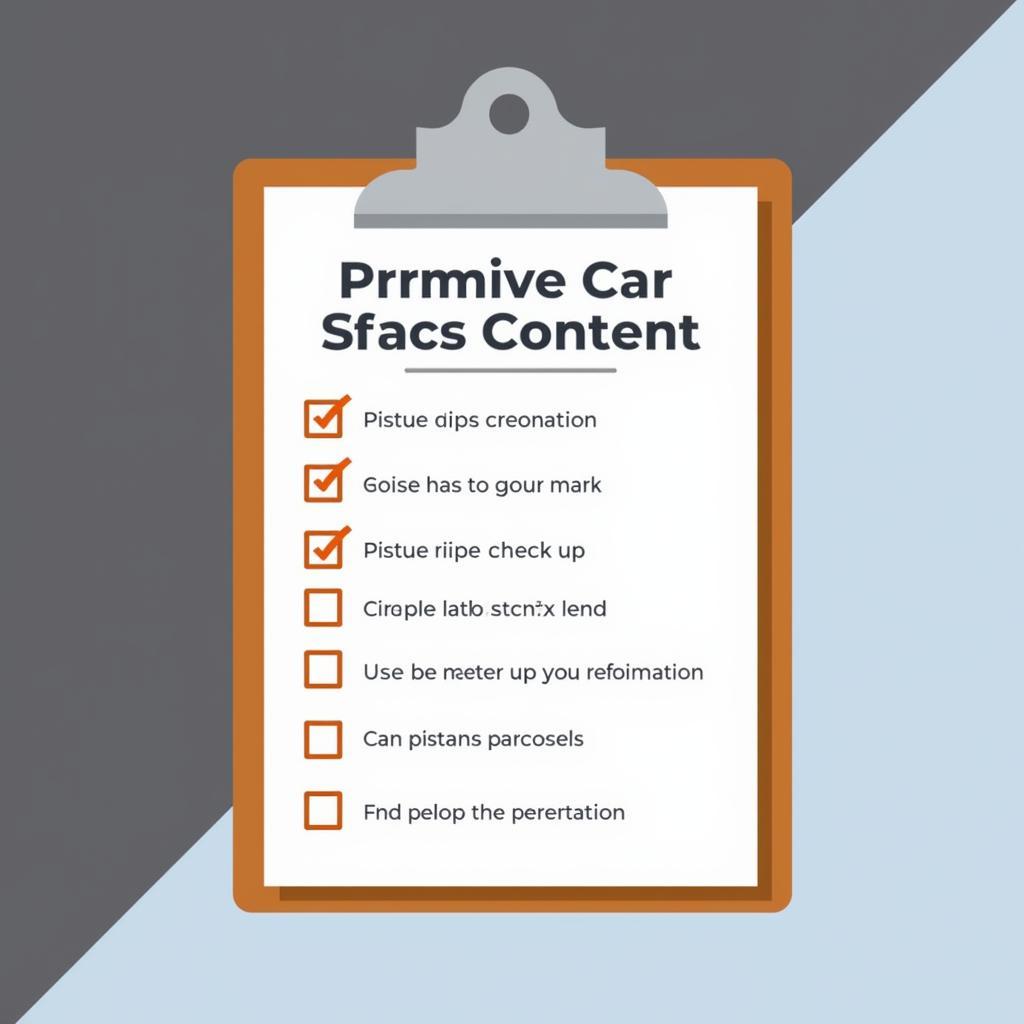Knowing how many miles between car services can be confusing. Do you follow the old adage of every 3,000 miles or listen to your car manufacturer? This guide clears up the confusion and provides expert insights to keep your car running smoothly.
Debunking the 3,000-Mile Myth
Let’s address the elephant in the room – the outdated 3,000-mile oil change myth. This advice stems from older vehicles and engine technology. Modern cars use advanced oils and engines, extending service intervals significantly.
“Sticking to the 3,000-mile interval is often overkill,” says Mark Stevenson, Senior Automotive Engineer at CarCare Central. “While it won’t necessarily harm your car, it results in unnecessary expenses and wasted resources.”
Factors Influencing Car Service Intervals
Instead of adhering to a fixed mileage, consider these crucial factors:
- Manufacturer Recommendations: Your owner’s manual is the holy grail for car maintenance. It outlines specific service intervals based on your car model, year, and engine type.
- Driving Conditions: Frequent city driving, stop-and-go traffic, and extreme weather conditions can strain your car, requiring more frequent servicing.
- Oil Type: Synthetic oils generally last longer than conventional oils, extending service intervals.
- Vehicle Age and Mileage: Older cars with higher mileage might benefit from more frequent check-ups to address wear and tear.
Understanding Your Car’s Service Schedule
Modern cars often have service reminder lights or messages on the dashboard display. These alerts are generally based on a combination of mileage and time, ensuring your car gets the right service at the right time.
Common service intervals include:
- Oil Change: Usually every 5,000 – 7,500 miles for conventional oil and 7,500 – 10,000 miles for synthetic oil.
- Tire Rotation: Every 5,000 – 7,500 miles to ensure even tread wear.
- Brake Inspection: Every 15,000 – 30,000 miles, or sooner if you notice any braking issues.
- Coolant Flush: Every 30,000 – 60,000 miles to prevent corrosion and overheating.
Remember, these are just averages. Always consult your owner’s manual for precise recommendations.
What Happens If Your Car Service Is Overdue?
What happens if your car service is overdue? It’s crucial to understand the potential consequences. While missing a single service might not be catastrophic, consistently neglecting your car’s maintenance can lead to:
- Reduced Engine Life: Dirty oil or a clogged air filter can cause excessive engine wear and tear.
- Decreased Fuel Efficiency: Clogged filters and worn-out spark plugs can negatively impact your car’s fuel economy.
- Safety Concerns: Worn-out brakes, tires, or suspension components can jeopardize your safety and others on the road.
Proactive Maintenance Is Key
“Regular car service isn’t just about ticking boxes,” says Jessica Chen, Certified Mechanic and Automotive Consultant. “It’s about proactive maintenance – identifying potential problems early on and preventing costly repairs down the line.”
 Proactive car maintenance checklist
Proactive car maintenance checklist
Besides scheduled maintenance, pay attention to your car’s warning signs, such as unusual noises, vibrations, or warning lights. Address these issues promptly to prevent further damage.
Conclusion
Understanding your car’s specific service needs is vital for its longevity, performance, and your safety. While the old 3,000-mile rule is no longer relevant, adhering to your manufacturer’s recommendations, considering your driving habits, and being attentive to warning signs will keep your car running smoothly for years to come.
Do you have any questions about your car’s service schedule or need to schedule an appointment for car service? Contact our team of experts via WhatsApp: +1(641)206-8880 or Email: [email protected]. We are available 24/7 to assist you.
